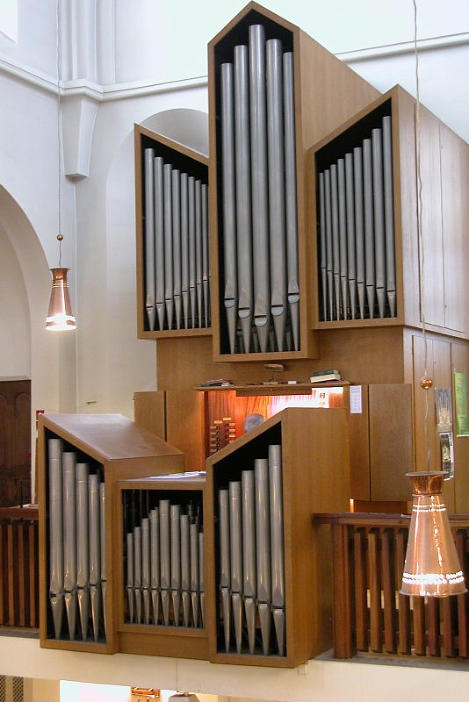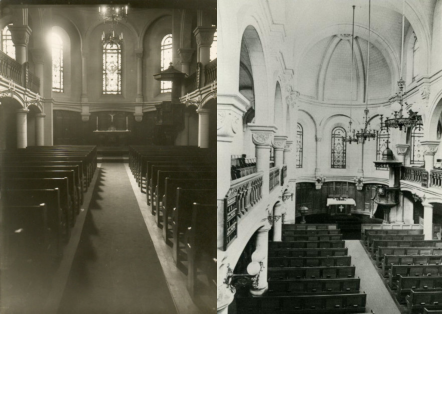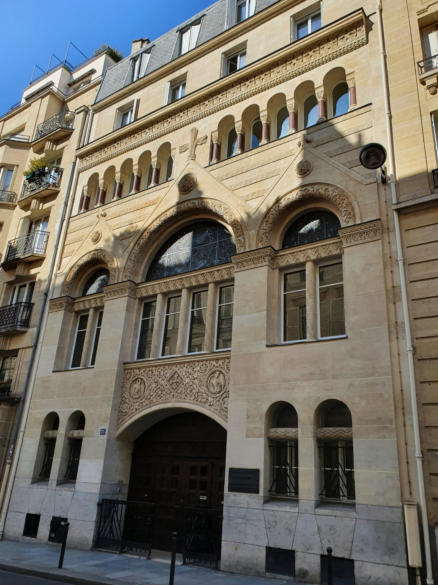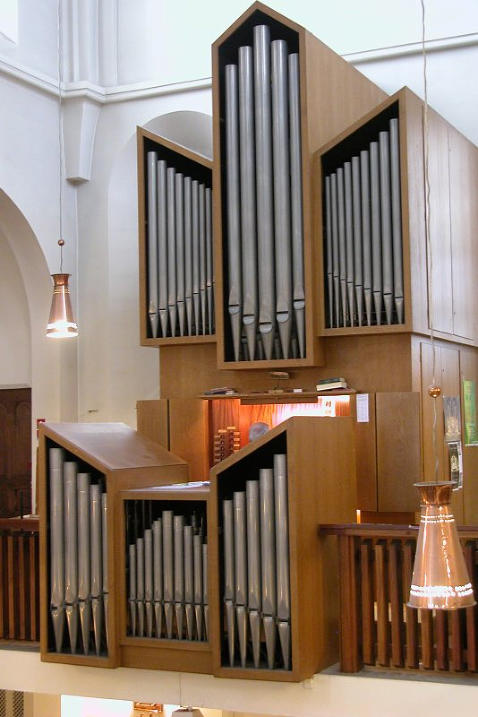


ORGANS OF PARIS © 2024 Vincent Hildebrandt HOME ALL ORGANS



The "Christuskirche - German Protestant Church of
Paris" is attached to the Evangelical Church of
Germany (EKD). The beginnings of the German
Protestant community date back to the 17th century
(official establishment in 1679), when Protestants were
still forbidden to celebrate religious services in Paris. It
was not until 1806 that freedom of religion was
granted by Napoleon.
In the mid-19th century, nearly 70,000 Germans lived
in the city, most of them in poor conditions. The
present church was built in 1894 by the German
parishioners of Paris who had previously gathered in
the Lutheran churches of the Redemption and the
Billettes. Immediately, the need to have an organ to
accompany the Lutheran liturgy, dear to Martin Luther,
was felt.
Confiscated during the First World War, it was returned
to the German community in the 1920s and its interior
was completely renovated in the taste of the time.

D1
The installation of its first organ was the starting point of
an intense musical life. This organ was the opus 219 of the
German manufacturer Gebr. Link in Giengen-sur-Brenz.
The instrument was built to be included at the Universal
Exhibition in Antwerp (Belgium) in 1894 where it was
awarded the Medal of Honor. Purchased by the parish, its
transfer was carried out by the same factory. With tubular
pneumatic transmission, it possessed a romantic stoplist
of 12 real stops spread over two keyboards and pedals.
During the First World War, the instrument was
dismantled and reinstalled in the Lutheran Church of
Ascension, Rue Dulong in Paris, in 1919, where it is still
present.
Between the two wars, the project of a new instrument
was developed with the support of Dr. Albert Schweitzer
who advocated the construction of a new organ by Fritz
Haerpfer, but the Second World War put an end to the
project.
In 1964, the German builder Detlef Kleuker of Bielefeld
then built the current organ. Its layout was inspired by
German Baroque instruments and was partly financed by
German Chancellor Konrad Adenauer. Shortly after its
completion, an expansion project was formulated, but that
was never completed.
Organiste titulaire
Helga Schauerte
Concerts
Regularly
Services with organ
Sunday, 10:30 a.m.
Videos
-
Photo: Victor Weller


Organs of Paris

ORGANS OF PARIS © 2024 Vincent Hildebrandt ALL ORGANS
D1
The installation of its first organ was the starting point of an
intense musical life. This organ was the opus 219 of the
German manufacturer Gebr. Link in Giengen-sur-Brenz. The
instrument was built to be included at the Universal
Exhibition in Antwerp (Belgium) in 1894 where it was
awarded the Medal of Honor. Purchased by the parish, its
transfer was carried out by the same factory. With tubular
pneumatic transmission, it possessed a romantic stoplist of
12 real stops spread over two keyboards and pedals. During
the First World War, the instrument was dismantled and
reinstalled in the Lutheran Church of Ascension, Rue Dulong
in Paris, in 1919, where it is still present.
Between the two wars, the project of a new instrument was
developed with the support of Dr. Albert Schweitzer who
advocated the construction of a new organ by Fritz Haerpfer,
but the Second World War put an end to the project.
In 1964, the German builder Detlef Kleuker of Bielefeld then
built the current organ. Its layout was inspired by German
Baroque instruments and was partly financed by German
Chancellor Konrad Adenauer. Shortly after its completion, an
expansion project was formulated, but that was never
completed.
Organiste titulaire
Helga Schauerte
Concerts
Regularly
Services with organ
Sunday, 10:30 a.m.
Videos
-
Photo: Victor Weller





















